An Index for Quantitative Evaluation of the Mixing in Ethanol Precipitation of Traditional Chinese Medicine
Abstract
:1. Introduction
2. Derivation of Quantitative Evaluation Index
2.1. Features of Mixing Condition Indicator
2.2. Derivation of WMR Calculation Formula
3. Materials and Methods
3.1. Chemicals and Reagents
3.2. Preparation of Codonopsis Radix Water Extract Concentrate
3.3. Analytical Methods
3.4. Determination of the Mixing Condition Indicator
3.5. Single-Factor Experiments with Stirring Devices
3.6. Single-Factor Experiments with the Micromesh Mixer
4. Results
4.1. Results of Determination for Mixing Condition Indicator
4.2. Results of Ethanol Precipitation with Stirring Devices
4.3. Results of Ethanol Precipitation with a Micromesh Micromixer
4.4. The Analysis of WMR Value Calculated with the Previous Dataset
5. Discussions
5.1. Relationship between WMR Values and Total Solid Removal Rates
5.2. Deficiency of the Index
6. Conclusions
Supplementary Materials
Author Contributions
Funding
Data Availability Statement
Conflicts of Interest
Abbreviations
Appendix A

References
- State Pharmacopoeia Commission. Pharmacopoeia of the People’s Republic of China; China Medical Science Press: Beijing, China, 2020. [Google Scholar]
- Lee, H.; Gupta, R.; Kim, S.; Wang, Y.; Rakwal, R.; Agrawal, G.; Kim, S. Abundant storage protein depletion from tuber proteins using ethanol precipitation method: Suitability to proteomics study. Proteomics 2015, 15, 1765–1769. [Google Scholar] [CrossRef] [PubMed]
- Yan, J.; Wang, C.; Yu, Y.; Wu, L.; Chen, T.; Wang, Z. Physicochemical characteristics and in vitro biological activities of polysaccharides derived from raw garlic (Allium sativum L.) bulbs via three-phase partitioning combined with gradient ethanol precipitation method. Food Chem. 2021, 339, 128081. [Google Scholar] [CrossRef]
- Gong, X.; Li, Y.; Qu, H. Removing tannins from medicinal plant extracts using an alkaline ethanol precipitation process: A case study of Danshen injection. Molecules 2014, 19, 18705–18720. [Google Scholar] [CrossRef] [PubMed] [Green Version]
- Lu, X. Studies on Ethanol Precipitation and Countercurrent Extration Refining Processes of Lonicerae Japonicae Flos and Artemisiae Annuae Herba Water Extract. Master’s Thesis, Zhejiang University, Hangzhou, China, 2014. [Google Scholar]
- Yuan, J. Optimization of Alcohol Precipitation Process for Extract of Carthamus Tinctorius and Salvia Miltiorrhiza and Investigation on the Encapsulated Loss Phenomena. Master’s Thesis, Zhejiang University, Hangzhou, China, 2011. [Google Scholar]
- Zhang, T.; Guo, X.; Meng, H.; Tang, X.; Ai, C.; Chen, H.; Lin, J.; Yu, S. Effects of bovine serum albumin on the ethanol precipitation of sugar beet pulp pectins. Food Hydrocoll. 2020, 105, 105813. [Google Scholar] [CrossRef]
- Guo, X.; Meng, H.; Zhu, S.; Tang, Q.; Pan, R.; Yu, S. Developing precipitation modes for preventing the calcium-oxalate contamination of sugar beet pectins. Food Chem. 2015, 182, 64–71. [Google Scholar] [CrossRef] [PubMed]
- Tai, Y.; Shen, J.; Luo, Y.; Qu, H.; Gong, X. Research progress on the ethanol precipitation process of traditional Chinese medicine. Chin. Med. 2020, 15, 84. [Google Scholar] [CrossRef] [PubMed]
- Gong, X.; Li, Y.; Guo, Z.; Qu, H. Control the effects caused by noise parameter fluctuations to improve pharmaceutical process robustness: A case study of design space development for an ethanol precipitation process. Sep. Purif. Technol. 2014, 132, 126–137. [Google Scholar] [CrossRef]
- Zhao, F.; Li, W.; Pan, J.; Qu, H. Process characterization for ethanol precipitation of Salviae miltiorrhizae Radix et Rhizoma (Danshen) using 1H NMR spectroscopy and chemometrics. Process Biochem. 2021, 101, 218–229. [Google Scholar] [CrossRef]
- Zhou, F.; Li, J.; He, Y.; Mu, R.; Fu, C. Simultaneous determination of eight components in Siwu decoction by HPLC and analysis of transmitting of the components in water extraction and ethanol precipitation process. Chin. J. Pharm. Anal. 2019, 39, 983–991. [Google Scholar]
- Jiang, M.; Zhang, X.; Shao, F.; Shang, Y.; Yang, M.; Liu, R.; Mei, H. Effect of ethanol to material ratio on ethanol precipitation and sediment morphology of Shuanghuanglian preparation. Chin. Tradit. Herb. Drugs 2020, 51, 4954–4959. [Google Scholar]
- Pan, H.; Deng, H.; Chen, Z.; Zhang, Y.; Wang, L. Study on balance of process of alcohol precipitation of ganmaoling granules. Chin. J. Chin. Mater. Med. 2016, 41, 1376–1379. [Google Scholar]
- Shao, F.; Yu, M.; Jiang, M.; Yang, M.; Shang, Y.; Liu, R.; Zhang, X. Establishment of determination of fractal dimension of ethanol-precipitated flocs of two root medicinal herbs. Chin. J. Exp. Tradit. Med. Form. 2019, 25, 103–107. [Google Scholar]
- Zhang, Y.; Liu, L.; Chang, X.; Wu, Y.; Xiao, W.; Hu, J.; Chao, E. Optimization of alcohol precipitation technology of Biqiu granules based on index components and pharmacodynamics. Chin. J. Chin. Mater. Med. 2016, 41, 4598–4604. [Google Scholar]
- Koh, G.; Chou, G.; Liu, Z. Purification of a water extract of Chinese sweet tea plant (Rubus suavissimus S. Lee) by alcohol precipitation. J. Agric. Food Chem. 2009, 57, 5000–5006. [Google Scholar] [CrossRef] [Green Version]
- Gong, X.; Huang, S.; Jiao, R.; Pan, J.; Li, Y.; Qu, H. The determination of dissociation constants for active ingredients from herbal extracts using a liquid–liquid equilibrium method. Fluid Phase Equilibr. 2016, 409, 447–457. [Google Scholar] [CrossRef]
- Xu, R.; Cong, Y.; Zheng, M.; Chen, G.; Chen, J.; Zhao, H. Solubility and modeling of hesperidin in cosolvent mixtures of ethanol, isopropanol, propylene glycol, and n-propanol + water. J. Chem. Eng. Data 2018, 63, 764–770. [Google Scholar] [CrossRef]
- Mo, F.; Ma, J.; Zhang, P.; Zhang, D.; Fan, H.; Yang, X.; Zhi, L.Q.; Zhang, J. Solubility and thermodynamic properties of baicalein in water and ethanol mixtures from 283.15 to 328.15 K. Chem. Eng. Commun. 2019, 208, 183–196. [Google Scholar] [CrossRef]
- Shen, Y.; Farajtabar, A.; Xu, J.; Wang, J.; Xia, Y.; Zhao, H.; Xu, R. Thermodynamic solubility modeling, solvent effect and preferential solvation of curcumin in aqueous co-solvent mixtures of ethanol, n-propanol, isopropanol and propylene glycol. J. Chem. Thermodyn. 2019, 131, 410–419. [Google Scholar] [CrossRef]
- Pan, J.; Shao, J.; Qu, H.; Gong, X. Ethanol precipitation of Codonopsis Radix concentrate with a membrane dispersion micromixer. J. Clean. Prod. 2020, 251, 119633. [Google Scholar] [CrossRef]
- Pan, J.; Tai, Y.; Qu, H.; Gong, X. Optimization of membrane dispersion ethanol precipitation process with a set of temperature control improved equipment. Sci. Rep. 2020, 10, 19010. [Google Scholar] [CrossRef] [PubMed]
- Pan, J.; He, S.; Zheng, J.; Shao, J.; Li, N.; Gong, Y.; Gong, X. The development of an herbal material quality control strategy considering the effects of manufacturing processes. Chin. Med. 2019, 14, 38. [Google Scholar] [CrossRef] [Green Version]
- Zhang, H.; Yan, A.; Gong, X.; Qu, H. Study on quality indicators for concentration process of supernatant obtained in first ethanol precipitation in production of Danshen injection. Chin. J. Chin. Mater. Med. 2011, 36, 1436–1440. [Google Scholar]
- Yan, A.; Gong, X.; Qu, H. Method for discriminating key quality control indicators of concentrated solution before traditional Chinese medicine ethanol precipitation. Chin. J. Chin. Mater. Med. 2012, 37, 1558–1563. [Google Scholar]
- Zou, Y.; Zhang, Y.; Paulsen, B.; Rise, F.; Chen, Z.; Jia, R.; Li, L.X.; Song, X.; Feng, B.; Tang, H.; et al. Structural features of pectic polysaccharides from stems of two species of Radix Codonopsis and their antioxidant activities. Int. J. Biol. Macromol. 2020, 159, 704–713. [Google Scholar] [CrossRef]
- Bailly, C. Anticancer properties of lobetyolin, an essential component of Radix Codonopsis (Dangshen). Nat. Prod. Bioprospect. 2021, 11, 143–153. [Google Scholar] [CrossRef]
- Tai, Y.; Qu, H.; Gong, X. Design space calculation and continuous improvement considering a noise parameter: A case study of ethanol precipitation process optimization for Carthami Flos extract. Separations 2021, 8, 74. [Google Scholar] [CrossRef]
- Li, B.; Kang, Q.; Chen, C.; Wang, Y.; Zhao, Y.; He, B.; Wu, Q. Optimization of alcohol precipitation technology for Fufang Shuanghua oral liquid based on FAHP-entropy method. Cent. South Pharm. 2019, 17, 414–419. [Google Scholar]
- Zhu, Y.; Yu, S.; Zhang, X.; Zhou, C.; Wei, J. Optimization of alcohol-precipitation technology for Fufang Roucongrong Mixture by AHP combined with orthogonal test. China Pharm. 2019, 22, 1257–1260. [Google Scholar]
- Zhang, L.; Gong, X.; Qu, H. Optimizing the alcohol precipitation of Danshen by response surface methodology. Sep. Purif. Technol. 2013, 48, 977–983. [Google Scholar] [CrossRef]
- Xu, Z.; Huang, W.; Gong, X.; Ye, T.; Qu, H.; Song, Y.; Liu, D.; Wang, G. Design space approach to optimize first ethanol precipitation process of Dangshen. Chin. J. Chin. Mater. Med. 2015, 40, 4411–4416. [Google Scholar]
- Peng, Y.; Lei, C.; Tang, Y.; Zhou, L.; Xia, X. Effects of Chitosan Flocculation Clarification Process and Alcohol Precipitation Process on Water Extract of Codonopsis Radix. Chin. J. Inform. Tradit. Chin. Med. 2017, 24, 81–84. [Google Scholar]
- Deineka, V.; Deineka, L.; Sidorov, A.; Kostenko, M.; Blinova, I. Estimating the solubility of anthocyanins using cartridges for solid-phase extraction. Russ. J. Phys. Chem. A 2016, 90, 861–863. [Google Scholar] [CrossRef]
- Zhang, X.; Chen, W.; Zeng, Y.; Mi, S.; Wang, Q.; Li, K.; Zhang, L. The synthesis and identification of Codonopsis Pilosula polyferose. Acta Chin. Med. Pharmacol. 2011, 39, 77–81. [Google Scholar] [CrossRef] [Green Version]
- Gong, X.; Wang, S.; Li, Y.; Qu, H. Separation characteristics of ethanol precipitation for the purification of the water extract of medicinal plants. Sep. Purif. Technol. 2013, 107, 273–280. [Google Scholar] [CrossRef]
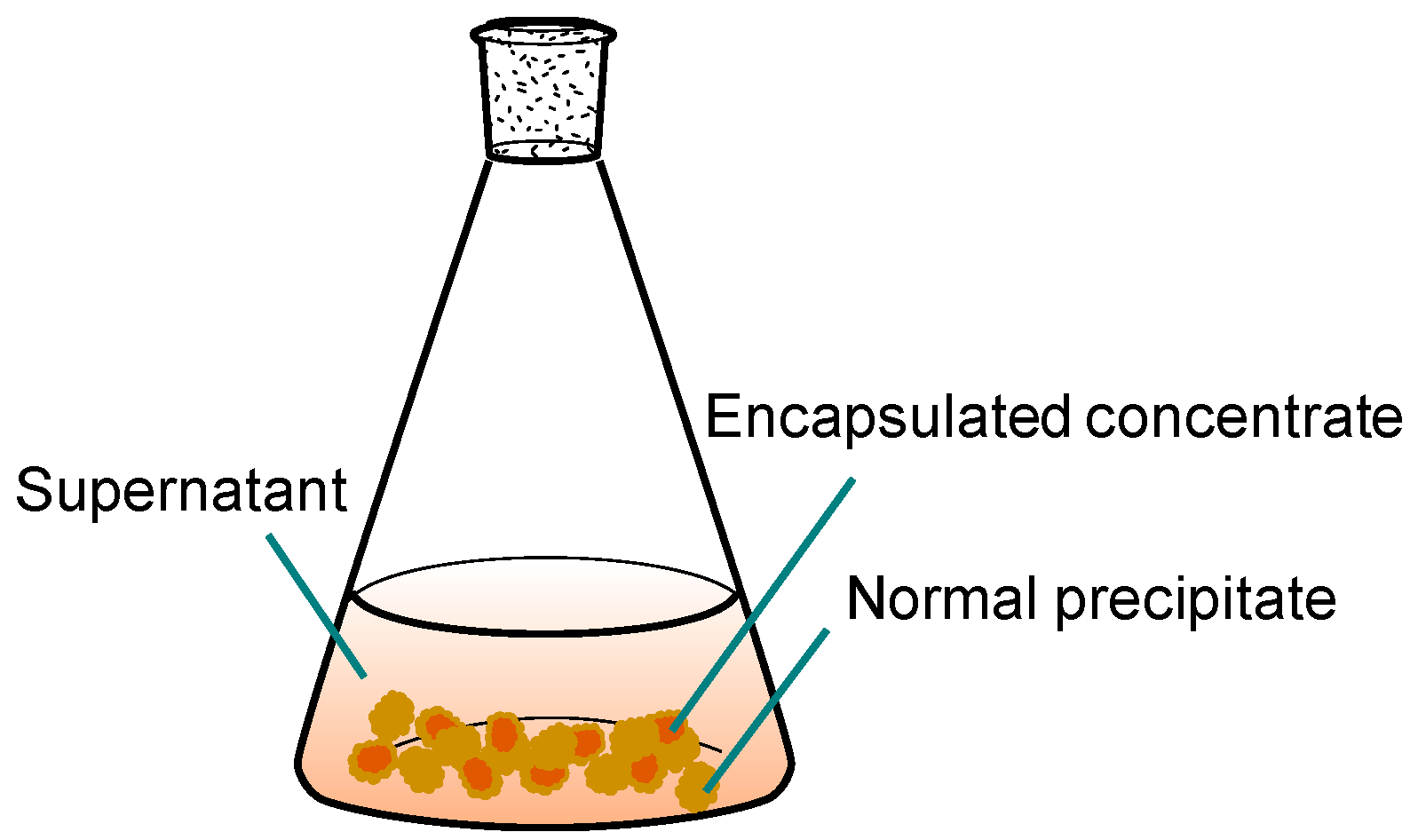
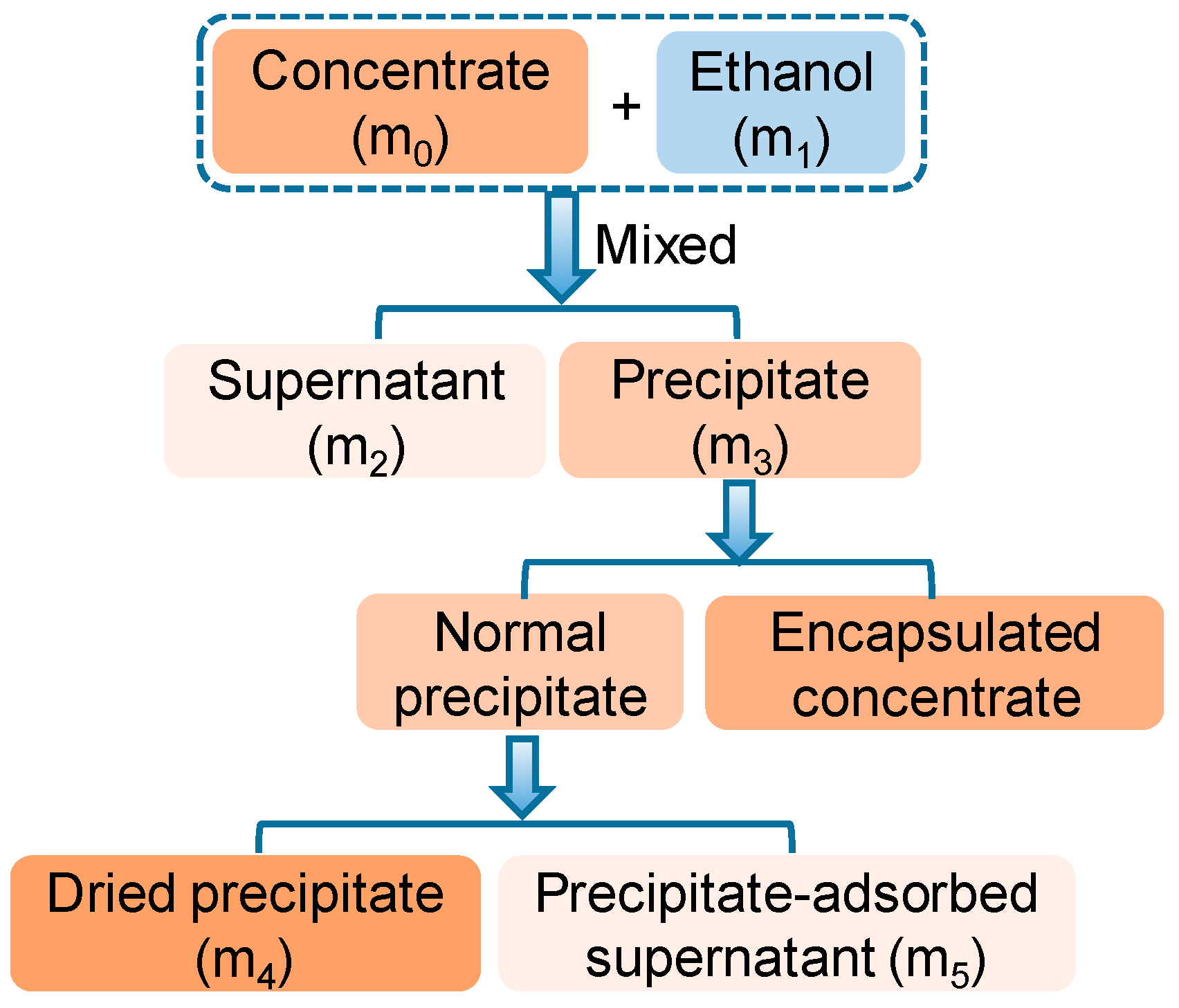
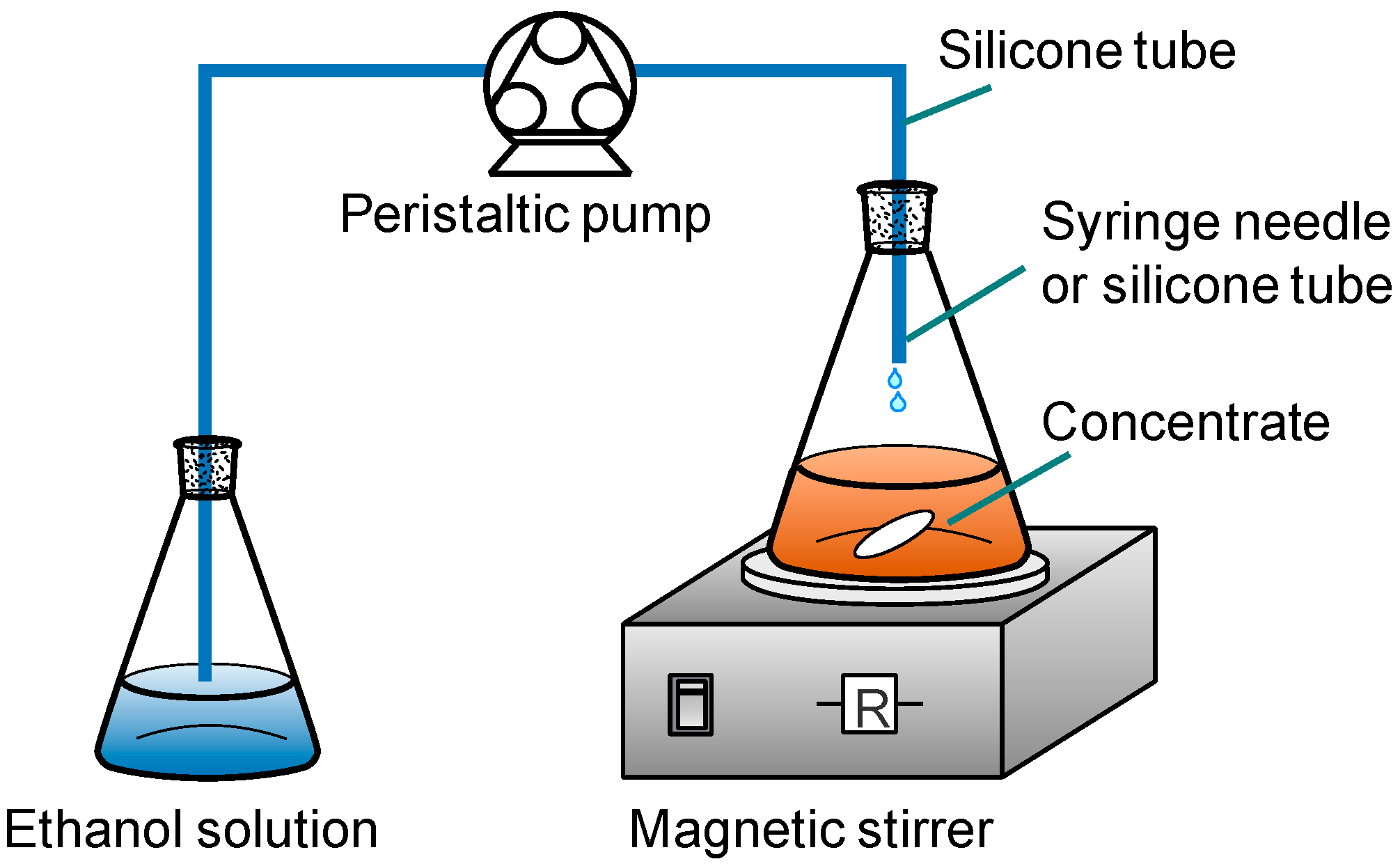
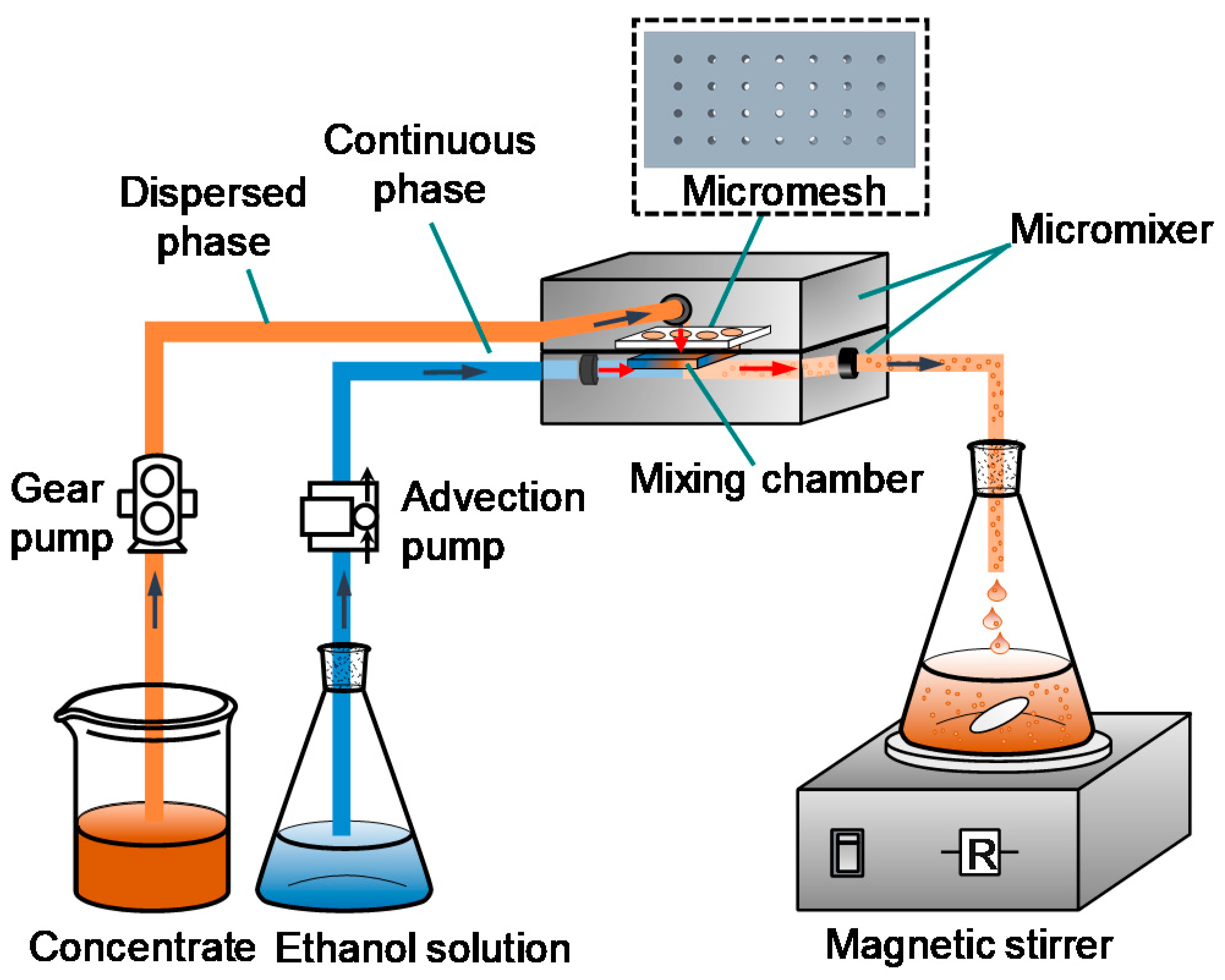

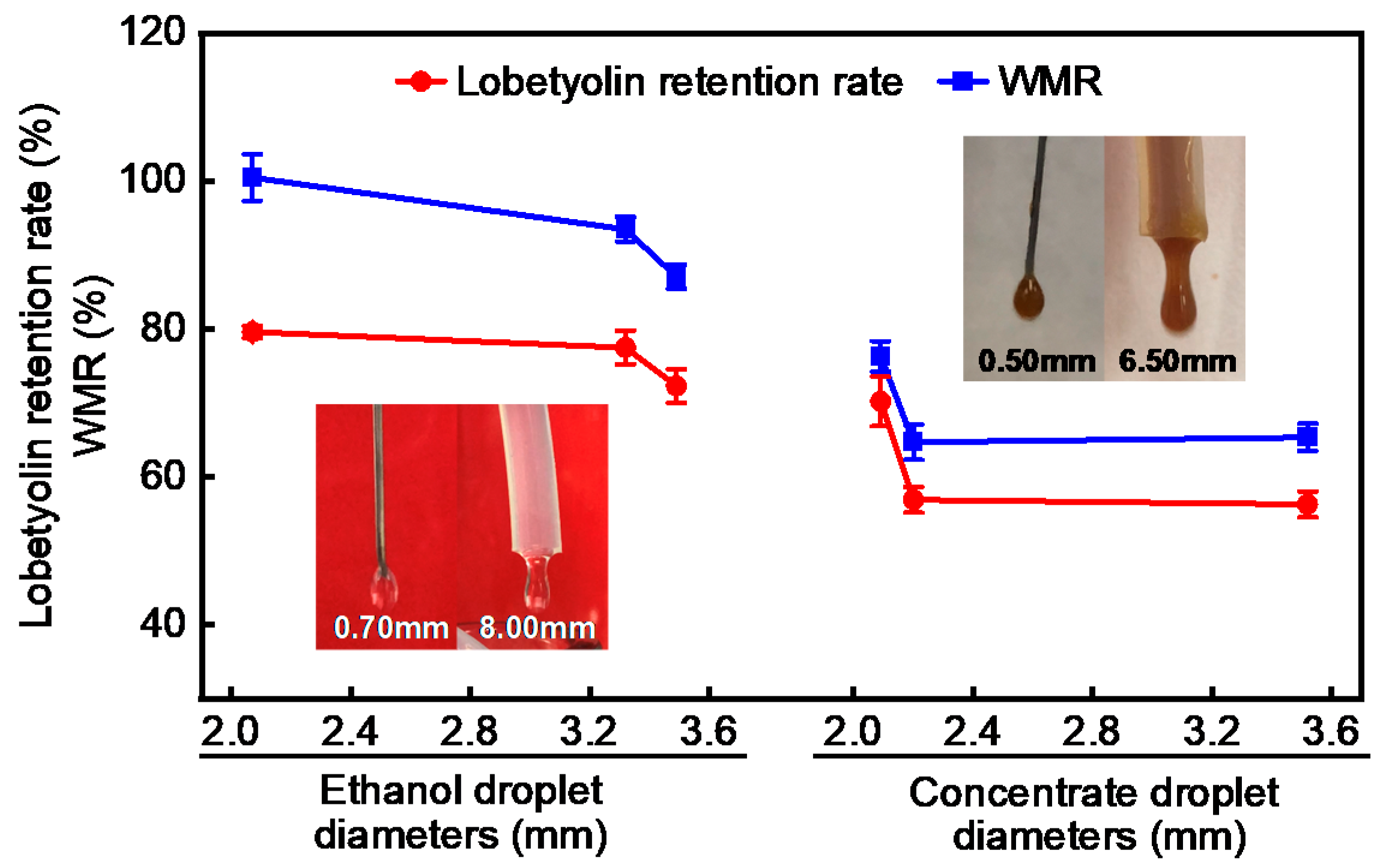
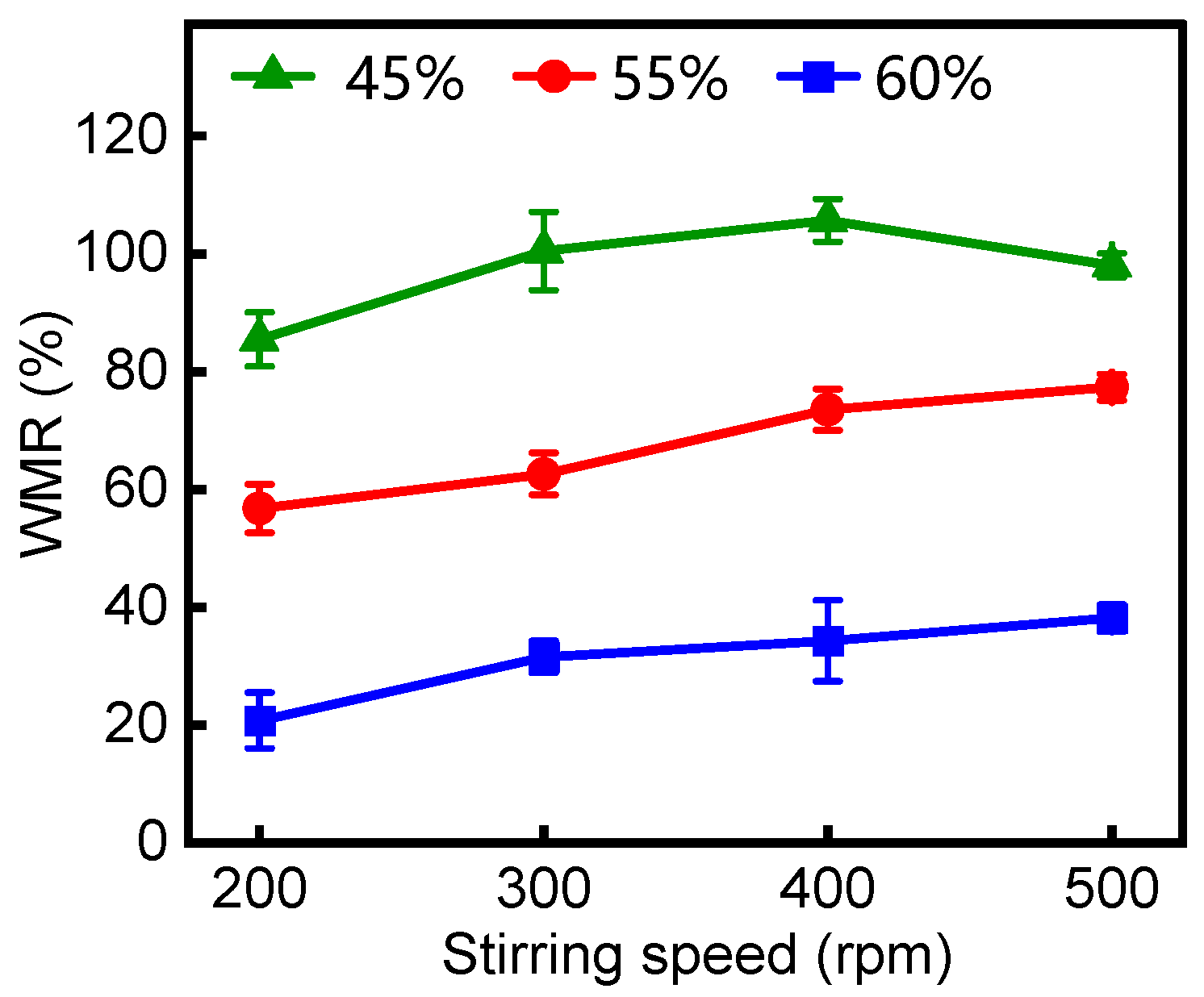

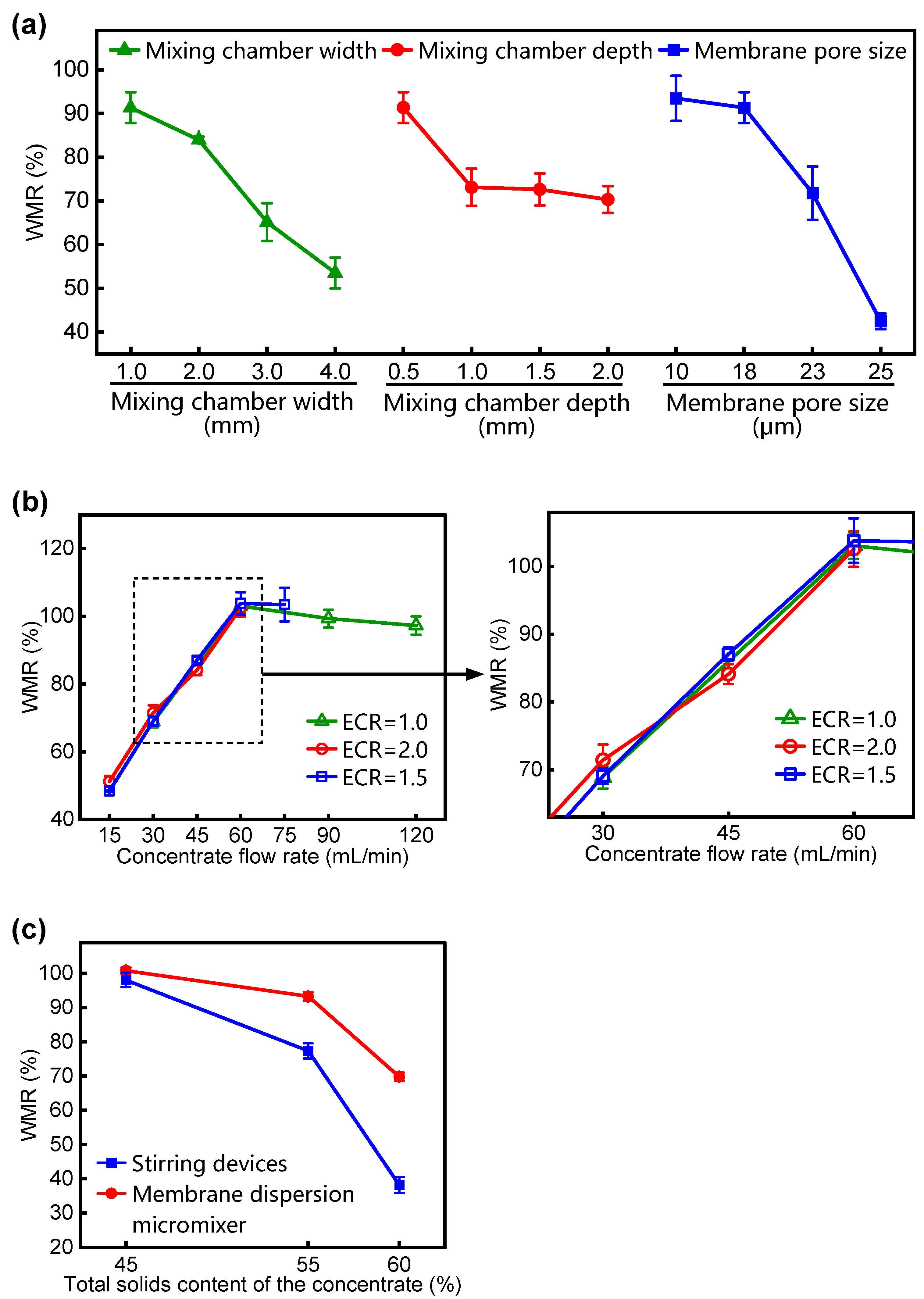
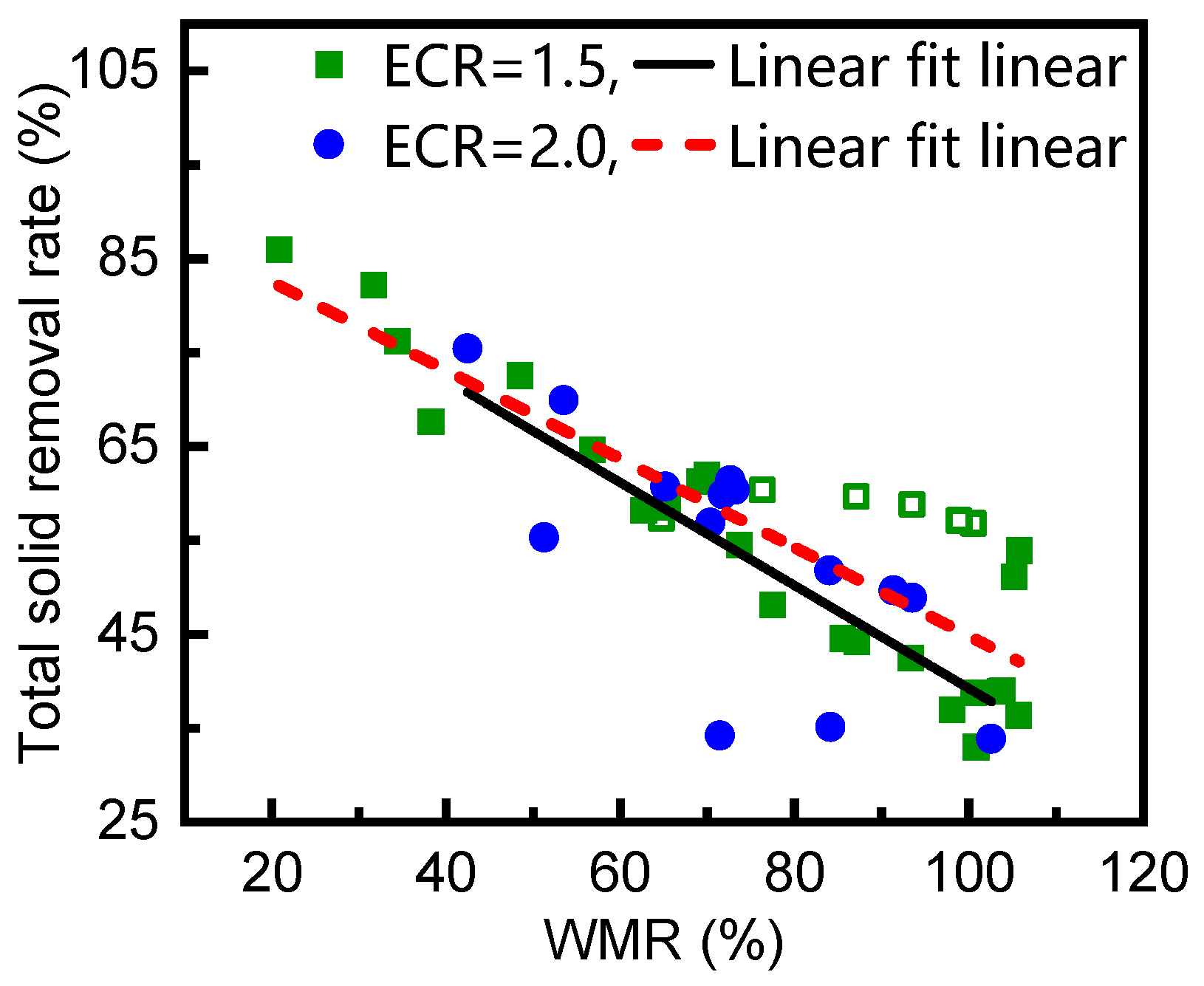
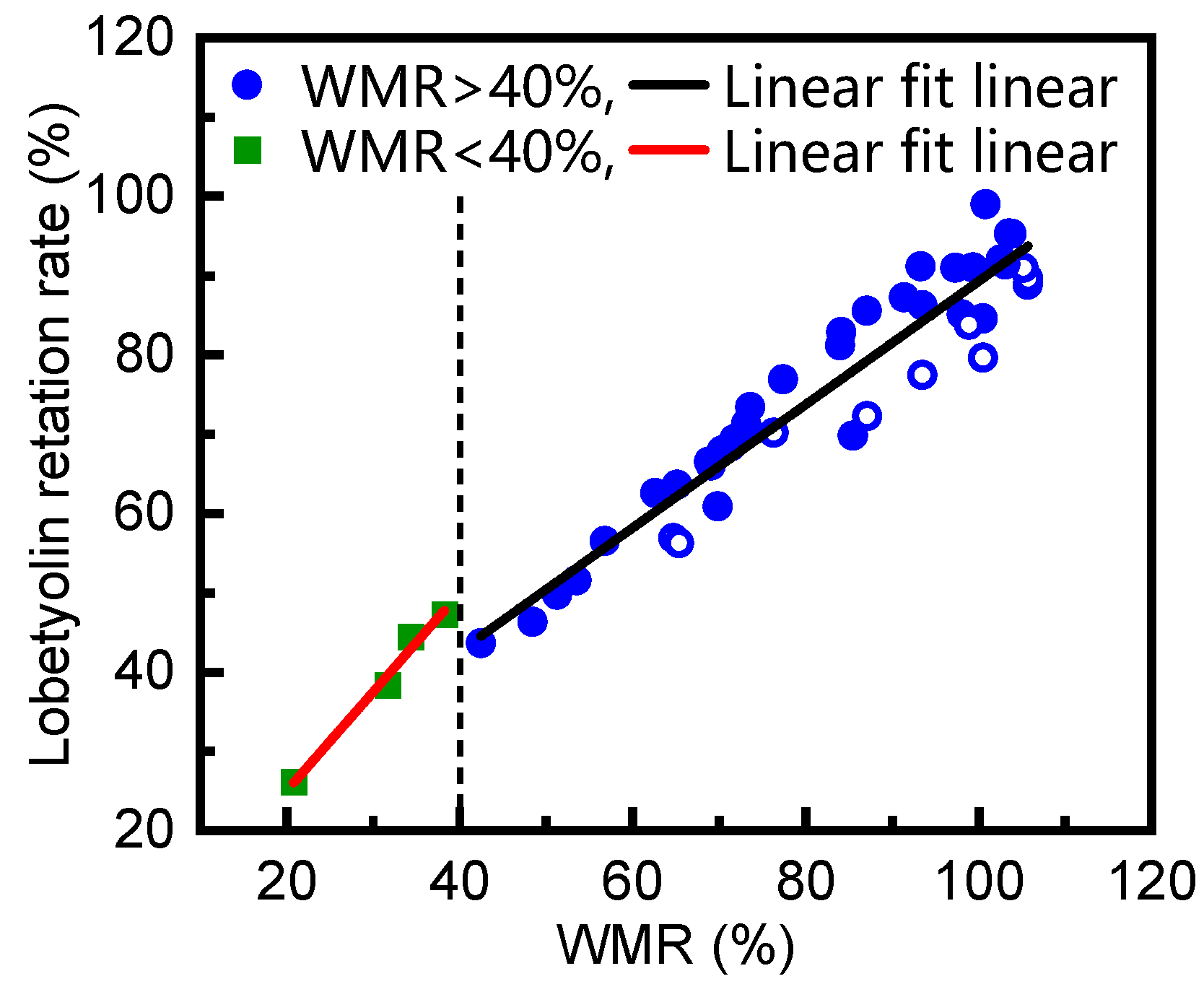
| Addition Modes | Droplet Diameters (mm) | Substances or Specifications for Diameter Control |
|---|---|---|
| Concentrate added dropwise into ethanol solution | 2.09 ± 0.050 | Syringe needle, ID: 0.46 mm; OD: 0.70 mm. |
| 3.20 ± 0.037 | Silicone tube, ID: 3.1 mm; OD: 6.2 mm. | |
| 3.52 ± 0.016 | Silicone tube, ID: 4.8 mm; OD: 8.0 mm. | |
| Ethanol solution added dropwise into concentrate | 2.06 ± 0.031 | Syringe needle, OD: 0.45 mm; length: 16 mm. |
| 3.25 ± 0.041 | Syringe needle, ID: 0.46 mm; OD: 0.70 mm. | |
| 3.49 ± 0.034 | Silicone tube, ID: 3.1 mm; OD: 6.2 mm. |
| ECR | a1 | b1 | R2 |
|---|---|---|---|
| 2.0 | –0.548 ± 0.148 | 0.940 ± 0.111 | 0.5334 |
| 1.5 | –0.471 ± 0.0534 | 0.920 ± 0.436 | 0.7424 |
| WMR | a1 | b1 | R2 |
|---|---|---|---|
| >40% | 0.777 ± 0.0388 | 0.116 ± 0.0325 | 0.9075 |
| <40% | 1.25 ± 0.109 | 0.00114 ± 0.0348 | 0.9849 |
Publisher’s Note: MDPI stays neutral with regard to jurisdictional claims in published maps and institutional affiliations. |
© 2021 by the authors. Licensee MDPI, Basel, Switzerland. This article is an open access article distributed under the terms and conditions of the Creative Commons Attribution (CC BY) license (https://creativecommons.org/licenses/by/4.0/).
Share and Cite
Tai, Y.; Pan, J.; Qu, H.; Gong, X. An Index for Quantitative Evaluation of the Mixing in Ethanol Precipitation of Traditional Chinese Medicine. Separations 2021, 8, 181. https://doi.org/10.3390/separations8100181
Tai Y, Pan J, Qu H, Gong X. An Index for Quantitative Evaluation of the Mixing in Ethanol Precipitation of Traditional Chinese Medicine. Separations. 2021; 8(10):181. https://doi.org/10.3390/separations8100181
Chicago/Turabian StyleTai, Yanni, Jingjing Pan, Haibin Qu, and Xingchu Gong. 2021. "An Index for Quantitative Evaluation of the Mixing in Ethanol Precipitation of Traditional Chinese Medicine" Separations 8, no. 10: 181. https://doi.org/10.3390/separations8100181
APA StyleTai, Y., Pan, J., Qu, H., & Gong, X. (2021). An Index for Quantitative Evaluation of the Mixing in Ethanol Precipitation of Traditional Chinese Medicine. Separations, 8(10), 181. https://doi.org/10.3390/separations8100181







